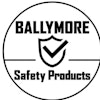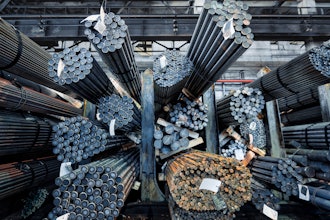Ace Hardware Corp. manufactures only one product that bears its name brand amongst all of the do-it-yourself tools, equipment and other miscellany occupying its more than 4,600 retail stores nationwide. That product is paint, or more specifically, an entire line of interior and exterior water-, latex-, oil- and solvent-based paints, stains, varnishes and coatings.
Tasked with the responsibility of delivering this line is Ace Paint Division, which consists of two manufacturing locations—one in Matteson, IL, and the other in Chicago Heights, IL. With a collective roster of about 180 employees, manpower opportunities span from management and production to research and development through three shifts of both day and night operations.
While Ace may not have laid anyone off last year, it wasn’t refilling positions. The paint division plans on hiring this year, though. If applying, plan to stay awhile. Through orientation, Ace offers applicants the opportunity to satisfy their curiosities before opting for a position on the Ace team.
Although the facility was immersed in an intense SAP business management software implementation that slowed productivity during Chem.Info’s plant tour, it wasn’t evident. Conveyor lines, mixers and myriad other equipment hummed as Ace Paint Division operations manager Pat Laughran and production supervisor Rick Whitman led through the depths of the 360,000-square-foot facility.
Best Business Model & Mix
“We began here in Matteson in 1984, and Chicago Heights climbed onboard about a decade later,” Laughran recalls. “Upon startup, we only made 2 million gallons [of end-product]. Within another decade, it’s more than tripled.” However, when staring down at a dwindling economy, Ace Paint Division did what any pragmatic business would do to retain its productivity levels—especially considering the division is generally limited to only supplying one retail chain—automate more processes and reinvent product strategies.
Whitman acknowledges that in Matteson, “We have material-handling systems to transport the majority of bulk materials. In fact, our process has been largely automated since the Matteson plant opened 26 years ago.” By contrast, Chicago Heights is more constrained by manual equipment, even though the facilities run similar batches. Despite this, the gallons per employee hour at both plants are four times the national average of the paint industry.
One obvious goal was to embrace the green movement, both in terms of product line expansion and maximizing production efficiencies. “Now more than 80 percent of our latex formulas contain only 50 grams/liter of volatile organic compounds (VOCs) or less,” according to Whitman who also takes the opportunity to pitch a new water-based metal primer that the company recently launched. In another burst of ingenuity, the division additionally created its own label, Echelon, to sell outside of Ace Hardware.
Laughran predicts that water-based paint and coating products will subtly start to dominate traditional oil- and/or solvent-based paints this year due to consumer demand for environmentally sensitive products. As if offering evidence, he adds, “Our business used to be 80 percent latex vs. 20 percent oil; now we’re 85 vs. 15 percent,” respectively. The company is already prepared for this demand.
Still hovering in defense mode as a result of the recession, however, Ace has been proactively seeking other new business opportunities to help broaden its versatility, which in turn, enhances its marketability. The company even remains open to the notion of processing paint for third parties if need be.
A Stroke Of (Green) Genius
|
Ace Aims To Better Clean Up Its Act As part of Ace Paint Division’s commitment to alleviate any havoc it may wreak on the environment as a by-product of doing business, the paint and coating manufacturer aims to become a better proponent for—and example of—environmental stewardship. Claiming to have earned the right, by gradually accumulating triumphs, and more often than not learning hard lessons, the company wishes to share not only its recent green achievements, but also its contemporary initiatives in case you care to compare:
|
An awe-inspiring collection of plaques and awards on display in the lobby of the Matteson location proves Ace is committed to reducing its environmental impact. Judging from the intensity of green limelight falling on the facility, Ace culture also encourages employees to exercise an environmental conscience. In that vein, Whitman advises that fellow processors, “Be more aware of what you generate in terms of finished goods or the waste accumulated during production. Now days there’s more emphasis on not only what you get rid of and how you get rid of it, but also the companies to which you give it.”
That’s why, in a push to curb pollution in 2000, “We installed a thermal oxidizer to basically capture the solvent fumes and vapors that are generated during our process, and destroy them before they are released into the atmosphere.” Laughran admits, “Whatever burns in the oxidizer’s thermal chamber runs between 98.0 and 98.8 percent efficiency, so it’s an effective system capable of 25,000-CFM throughputs. And as our solvent business declines—for a variety of reasons having to do with regulations, VOCs and consumer preferences for water-based products—it more than handles what we need, annihilating approximately 10 tons of VOCs a year.”
Recycling mineral spirits in a batch process, the distillation unit conveniently permits reuse of the collected spirits to clean equipment. Last year alone, the equipment recovered more than 75,000 gallons, which would’ve otherwise been considered waste. This distillation process not only boasted a commendable two-year return on investment, but also savings on disposal costs and a reduced need to continually reinvest in consumables. Other benefits include the ability to avoid introducing more hazardous waste into the process, while discharging more waste out of the system.
Previously, Ace treated this wastewater chemically, then allowed the solids to settle. Whitman says, “We would decant the clear effluent down to the sanitary district. Then we would accumulate a solid-liquid sludge, until we had about 5,000 gallons, and send it out typically once a week. But it had to be liquid enough to pump—to put it on the truck and take it off at the other end—which means that you’re basically hauling a lot of extra water around” just for the sake of transport.
“The solids are also sent out once a week, but much more concentrated and dried, so we eliminated hauling, and in effect, all of the fuel being used to transport back and forth, and all of the dewatering process.” And now with the Alar rotary auto-vacuum, there’s no secondary treatment to undergo, achieving a quick return on investment of just under two years.
“In fact, we installed a second Alar unit in our other plant,” Whitman continues, “almost before we got the first one up and going here. We bought this one and were just implementing it, and we liked the way that it was working so well that we decided to install a second one at our other facility.”
Acing The Safety Program
Another quality that differentiates a successful facility from a failing one is its safety record. “We’ve gone more than 2.5 million man-hours without a lost-time accident—in fact, it’s been almost six years,” Laughran announces proudly. Ace Paint also earned safety program compliance distinction for three consecutive years at both facilities. Amongst hundreds of employees and lots of equipment, it’s quite an accomplishment, not to mention that it helps establish company buy-in, making the safety program more effective overall.
Following Ace safety protocols, each employee must attend monthly Environmental Health & Safety (EHS) meetings led by the company safety manager. During 45-minute to hour-long sessions, staff navigate through new safety topics to not only keep on top of regulations and standards, but also make certain safety is always top of mind. To ensure important safety subjects are translating into relevant knowledge, employees must also prove that they’re paying attention by passing an annual test. The program, moreover, compels employees to participate in critical safety training for many reasons, one of which is to obtain potential “safety days” (better known as vacation) if all program criteria are met.
Sage Ace Advice
Considering it a pattern luckily learned early, Laughran sagely suggests “taking the time to find processes that work for your product.” Equally as important to remember, though, is the right to seek out a process that simultaneously works within the market. Like compromise between opposite sides of the color continuum, Ace paints one solid business model from a diverse palette of manufacturing strengths—not only overcoming market fluctuations, but artfully thriving amidst a depressed market as well.






















